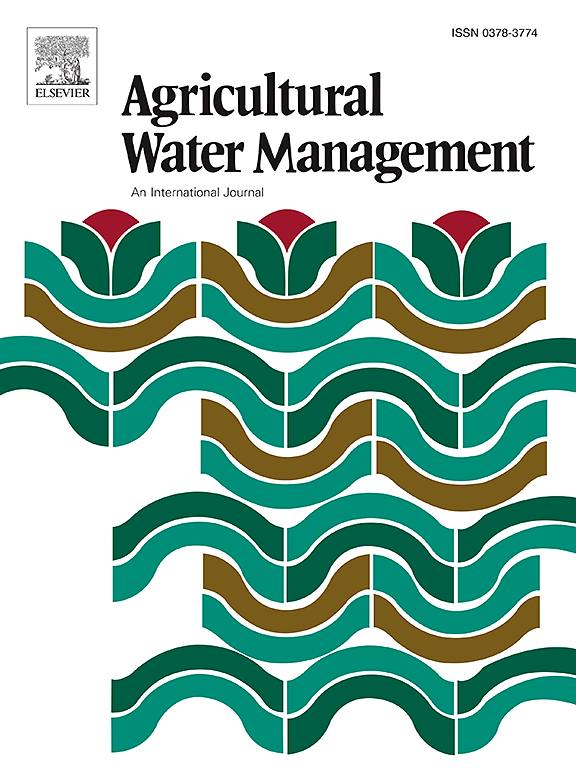Evaluation of electricity use and carbon emissions for agricultural water supply in South Korea: Focusing on Water for Food (W-F) nexus system
IF 5.9
1区 农林科学
Q1 AGRONOMY
引用次数: 0
Abstract
Agricultural water accounts for 63 % of the total water usage, and water is essential for food production. The supply and use of agricultural water for food production corresponds to “water for food (W-F)” nexus, and irrigation facilities such as reservoirs, pumping stations and groundwater wells are utilized to supply agricultural water, directly related to the electricity use. Electricity usage causes indirect carbon emissions; thus, to reduce carbon emissions in agriculture, it is necessary to quantitatively assess the direct and indirect carbon reduction effect. This study aimed to evaluate the electricity use and carbon emissions for agricultural water supply, focusing on the W-F nexus system for food production in water-energy-food nexus. Furthermore, the direct and indirect carbon emissions of paddy water management as a measure of reducing carbon emissions were comprehensively evaluated. The total electricity use for agricultural water supply by all sectors showed an increasing trend with large increase in electricity use for pumping stations and gradual increase in the proportion for upland irrigation. The total indirect carbon emissions were founded to gradually increases, with the proportion of carbon emissions from rice cultivation from 3.3 % to 7.1 %. When applying paddy water management, the total carbon reduction effect was estimated to be 24.76 % and 61.27 % for midseason drainage and shallow flooding. This study quantified water-energy-carbon linkage for food production system with the perspective of W-F nexus. Additionally, as the proportion of electricity use expected to increase, this study suggested that energy efficiency of agricultural water supply become more important issues.
求助全文
约1分钟内获得全文
求助全文
来源期刊

Agricultural Water Management
农林科学-农艺学
CiteScore
12.10
自引率
14.90%
发文量
648
审稿时长
4.9 months
期刊介绍:
Agricultural Water Management publishes papers of international significance relating to the science, economics, and policy of agricultural water management. In all cases, manuscripts must address implications and provide insight regarding agricultural water management.
 求助内容:
求助内容: 应助结果提醒方式:
应助结果提醒方式:


